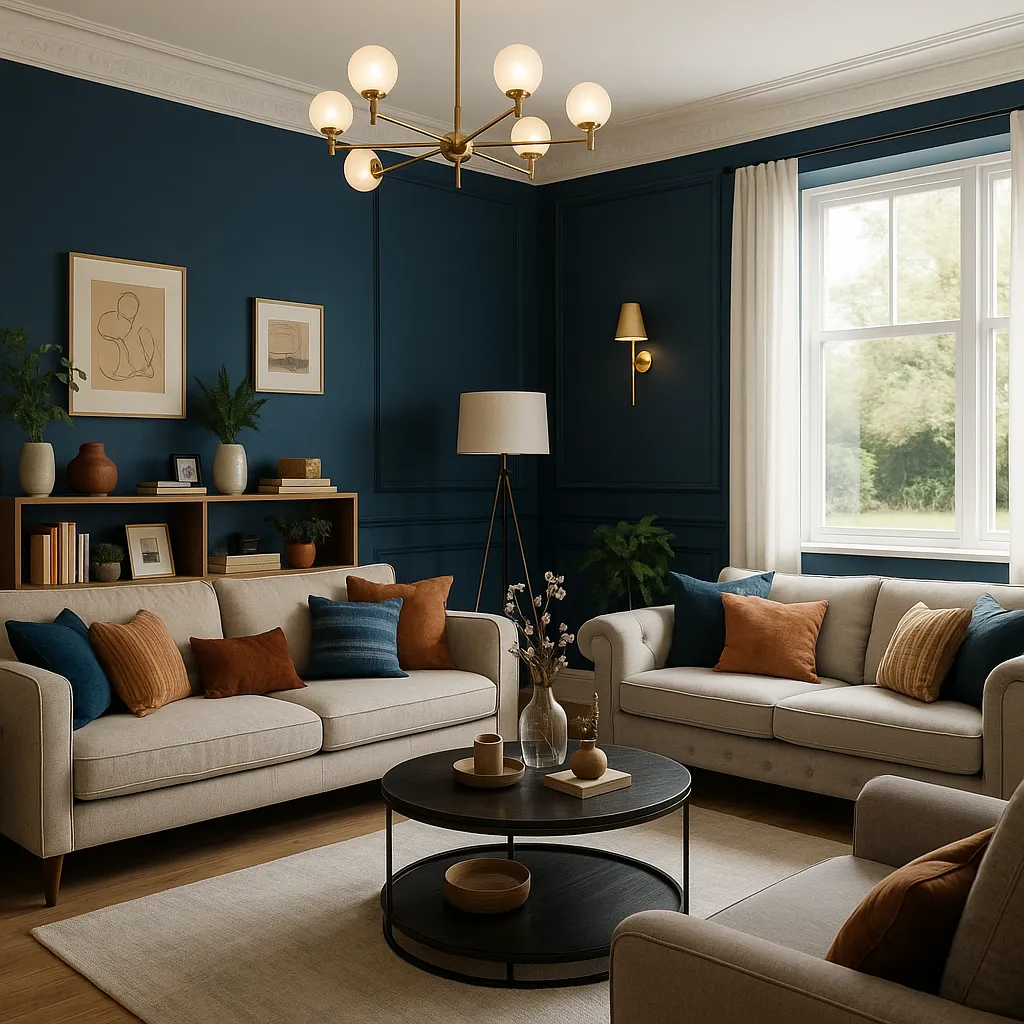Decorating a shared space—whether with a partner, roommate, or family—comes with unique challenges. Different tastes, habits, and needs can lead to compromises that don’t always feel stylish or personal. But with intentional planning and creative solutions, it’s absolutely possible to create a cohesive space that reflects everyone’s personality without sacrificing design. In this guide, you’ll learn how to decorate shared spaces that feel balanced, beautiful, and functional for everyone involved.
Start with Open Conversations
Before buying furniture or selecting paint colors, have an honest conversation with your co-inhabitants about expectations, preferences, and needs.
Key Questions to Ask Each Other:
- What colors or styles do you love—or dislike?
- What activities will the space need to accommodate?
- Are there any “non-negotiable” items or design elements?
- What does “comfort” mean to each of you?
The goal is to find common ground and avoid misunderstandings before making design decisions.
Define Shared and Personal Zones
In any shared living space, it’s helpful to separate communal areas from personal ones. This allows each person some autonomy, even in a small apartment or room.
Zoning Tips:
- Assign a corner of the living room to each person’s favorite chair or decor item.
- Create reading nooks, desk zones, or hobby areas with distinct styling.
- Use furniture arrangement, rugs, or lighting to visually divide open areas.
A space that honors individuality is often more harmonious than one that forces uniformity.
Choose a Neutral Base for Balance
When combining different styles, starting with a neutral foundation helps keep the room cohesive and adaptable to various tastes.
Neutral Base Ideas:
- Soft gray, beige, white, or warm taupe for walls and large furniture.
- Wood, metal, or black accents for timeless structure.
- Natural fiber rugs and curtains to soften the space.
Once you have a flexible base, you can layer in personality through accents and accessories.
Blend Design Styles Thoughtfully
Shared spaces often require combining different aesthetics—minimalist and boho, industrial and traditional, colorful and neutral. The secret is to find complementary elements between the styles.
Blending Tips:
- Pair modern furniture with vintage accessories.
- Balance sleek surfaces with textured fabrics.
- Combine structured shapes with organic ones (e.g., a modern couch and a rustic coffee table).
- Stick to a shared color palette, even if the styles vary.
Mixing styles adds depth and makes the space feel collected, not chaotic.
Compromise on Statement Pieces
If you’re choosing major items—like a sofa, dining table, or wall color—look for pieces that reflect shared values, such as comfort, quality, or functionality.
How to Choose:
- Go for clean, simple designs that appeal to both parties.
- Let one person choose the sofa and the other pick the coffee table.
- Select a neutral item and accessorize it with each person’s taste in throw pillows, art, or lighting.
It’s okay to trade off—collaboration often leads to better design choices.
Give Everyone a Voice in the Decor
A space feels shared when everyone has a hand in how it looks. Encourage each person to contribute at least one element they love.
Shared Contributions Could Include:
- A favorite piece of art or photograph.
- A bookshelf filled with personal collections.
- A cultural or travel souvenir.
- A color or material preference that gets reflected in textiles or finishes.
This creates a sense of ownership and comfort for everyone involved.
Use Storage to Maintain Harmony
Shared spaces are more prone to clutter. Stylish, functional storage helps avoid tension and keeps the decor polished.
Storage Solutions:
- Use labeled baskets or bins for individual items in shared closets or shelves.
- Opt for furniture with built-in storage like ottomans, benches, or coffee tables.
- Set rules for shared vs. personal storage zones.
- Keep surfaces clear by having designated “drop zones” for keys, mail, etc.
Well-organized spaces feel more peaceful and collaborative.
Add Personal Touches Without Clashing
It’s okay for a shared space to showcase personal identity—but the key is thoughtful placement and subtle integration.
Ideas for Balanced Personalization:
- Display a gallery wall with a mix of photos from both sides.
- Use shelves to mix personal mementos with neutral decor.
- Let each person select art, books, or plants to add to the room.
When both voices are visible in the space, it feels more authentic and welcoming.
Use Lighting to Create Ambiance for All
Lighting affects how everyone experiences a space. Make sure the atmosphere reflects shared comfort and function.
Lighting Tips:
- Use dimmers or multiple light sources for flexibility.
- Mix task lighting with warm ambient lighting (e.g., floor lamps and pendant lights).
- Let each person personalize their own lighting in private or semi-private areas.
The right lighting can bridge different preferences and enhance harmony.
Final Thoughts: Design Together, Live Happier
Decorating a shared space doesn’t have to mean sacrificing style. With communication, compromise, and creativity, you can build a home that reflects the personalities of everyone who lives there—while still being cohesive, functional, and visually beautiful.
Celebrate your differences, find common ground, and let your combined styles tell a story. When everyone feels represented, your shared space becomes more than just decorated—it becomes a home.
